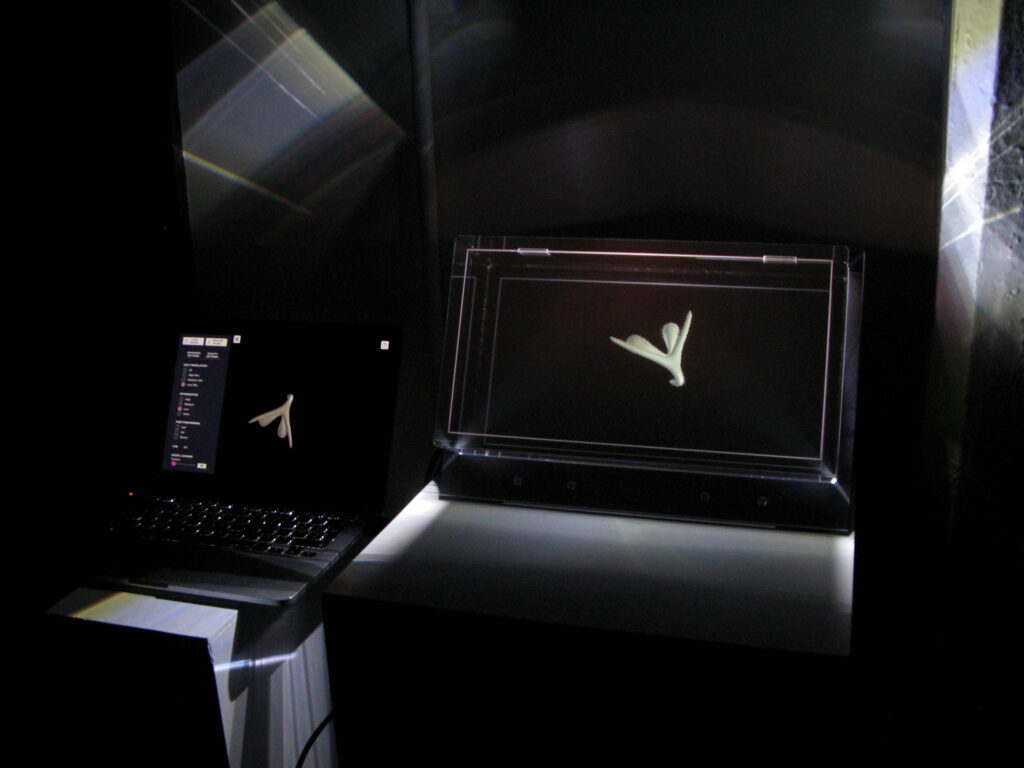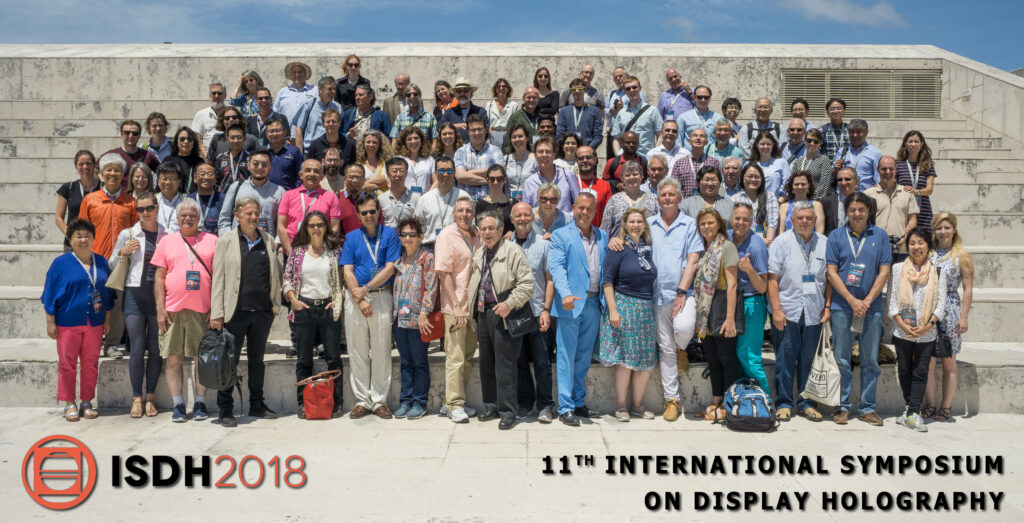Leonardo’s Executive Editor Roger Malina presented a keynote speech at Leonardo’s 50th Birthday celebration at ISDH2018. (Leonardo is a journal published six times a year by The MIT Press.) During his presentation, Malina stated that Holography is still an ’emergent art form’, with more research in the field welcomed by the international art/science/technology community. In comparison with for example Computer Art which is now seen as established.
In the video below Prof Martin Richardson and Prof Sean F. Johnston are capturing transmission holograms for the book Holograms: A Cultural History.
“Engineers, artists, hippies and hobbyists have played with, and dreamed about, holograms. This book explores how holograms found a place in distinct cultural settings. It is aimed at readers attracted to pop culture, visual studies and cultural history, scholars concerned with media history, fine art and material studies and, most of all, cross-disciplinary audiences intrigued about how this ubiquitous but still-mysterious visual medium grew up in our midst and became entangled in our culture.” Sean F. Johnston
But what is a hologram?
“Hologram: A three dimensional image which is optically and permanently recorded, in a light sensitive recording material such as film, using laser light (coherent light). The hologram image is recreated, or played back, via illumination by laser light or a point source of white light at a predetermined angle of illumination.” Holography artist Melissa Crenshaw
What is not a hologram? There are many technologies that are described as “holograms” in the media and promotions but in fact are not. The whale jumping out of the floor, Tupac and most videos you see that claim to show you a hologram are actually showing a Pepper’s ghost illusion. These can be beautiful and fun too. But they are not holograms. The photograph below shows Tove’s experimentation with a Lightfield Display from Looking Glass Factory. It is not a hologram.

Read more here: When is a hologram not a hologram?
Why holography?
“I was drawn to optical holography using a laser as no other media allowed me to touch and shape light so directly. Holography was a means to manipulate light itself: redirect it specifically; or focus it into dimensional imagery.” Holography artist Sally Weber
An early inspiration for Tove’s work was the seminal tabletop (viewable from above) hologram ‘Seattle’ (2010) exposed by Zebra Imaging. The mini-city rising into the air like a light sculpture triggered many years of research. This is a Direct-write digital hologram (DWDH).
Tove developed ideas around data visualisation using the full-parallax technology developed at Zebra Imaging. The below video shows a full-parallax tabletop DWDH hologram of a model of solar irradiation data over a year for a university building calculated by Dr Simon Rees. The hologram was designed by Tove. The hologram was financed through a Higher Education Innovation Funding bid built on Tove’s innovation.
A DWDH hologram is made up of very small hogels or holopixels, which each form a miniature hologram in themselves. The art print ‘Reading’ is a close-up photograph of holopixels from a Zebra Imaging hologram designed by Tove. These hogels are 700 micrometres (also called μm or microns) in size. “A synthetic hologram is an optical system made of hundreds of images amalgamated in a structure of holographic cells. Each of these images represents a point of view on a three-dimensional space which makes us consider synthetic holography as a multiple points of view perspective system.” (Desbiens)

However, in terms of the production of completed full-parallax holograms, the research had been on hold since Zebra Imaging closed its operations in 2017, waiting for another lab to come online. Tove has been working on a number of ideas to bring to the world when new a new facility opens. This technology is so cutting edge that it was not actually available at all globally after Zebra Imagings’s demise. However, this is now changing…
The third generation of DWDH holography is now becoming viable with full-colour created with continuous RGB lasers with the wavelengths 639, 532 and 457 nm, a perspective field of view of 120° provides full parallax and 250 micrometer hogels. The art hologram ‘Emergence’ has been created with this cutting-edge technology.
For ideas about what artists have made using different types of holography in the past, please visit Jonathan Ross’s Gallery 286 and collection.


